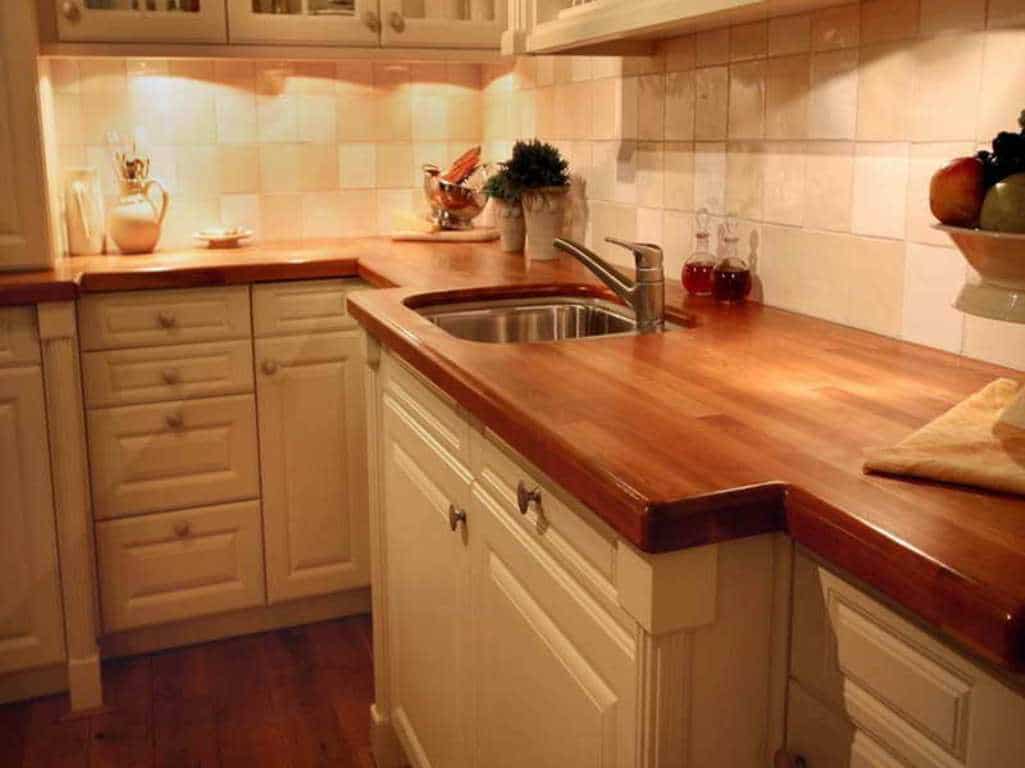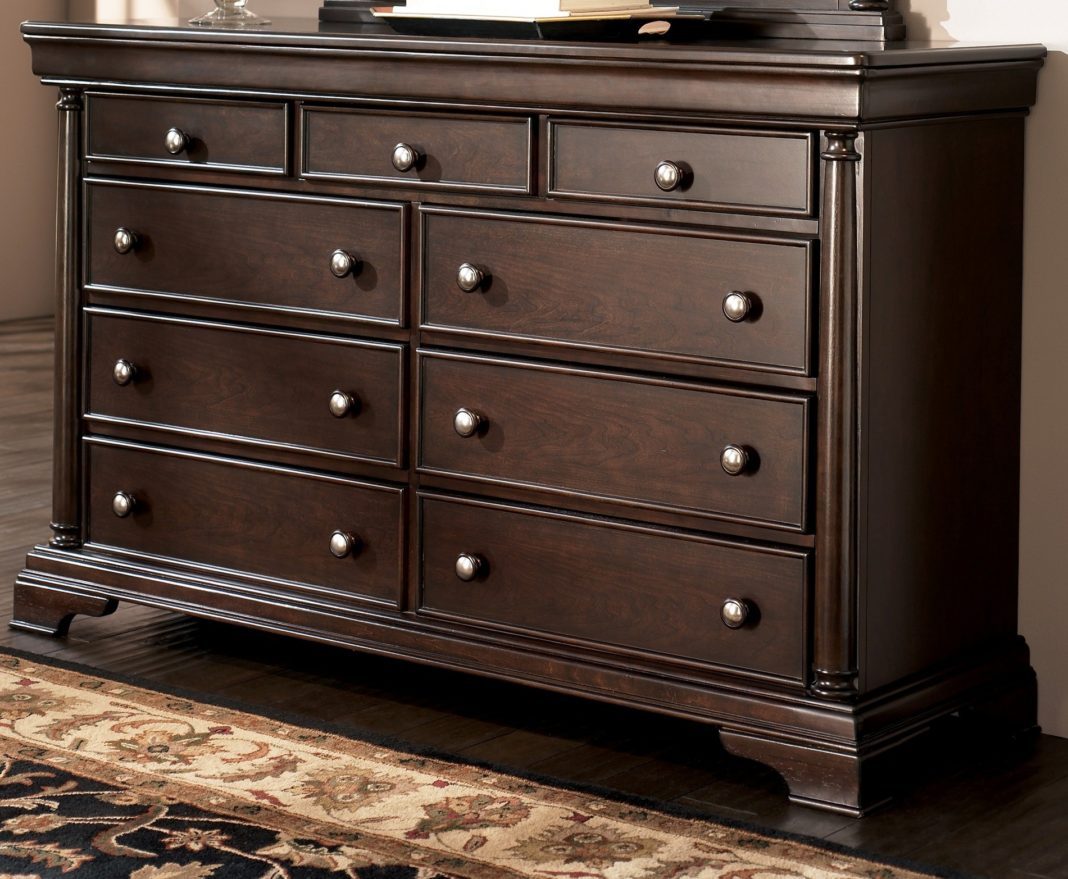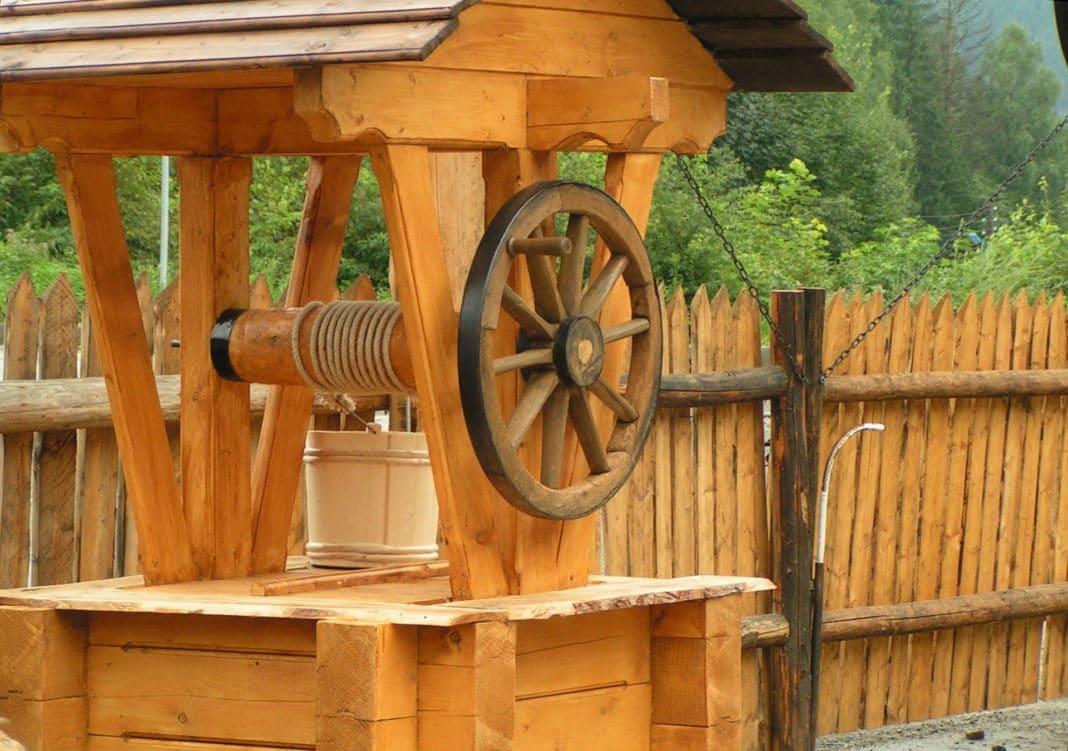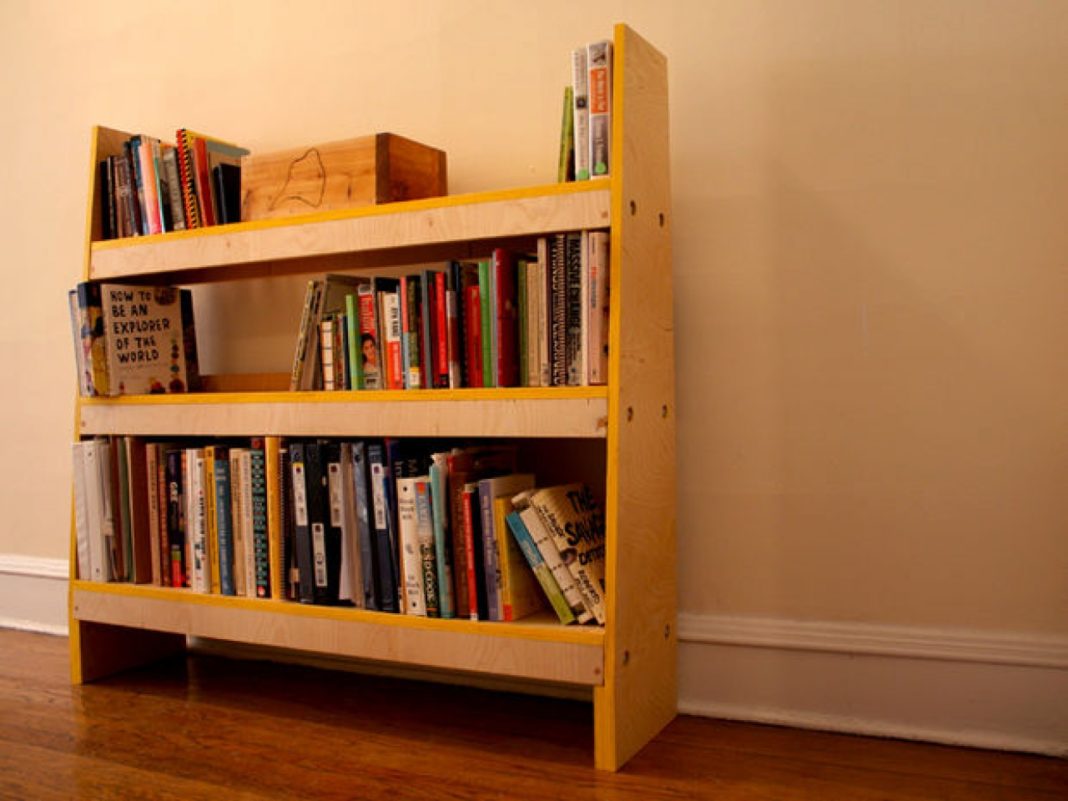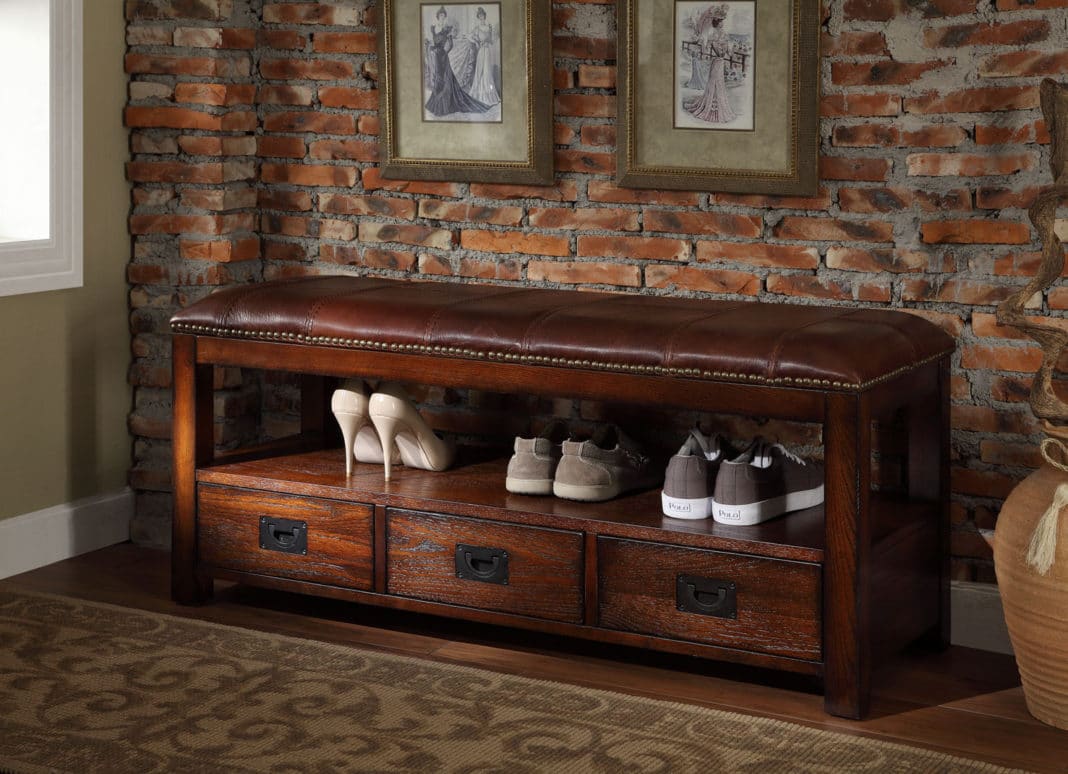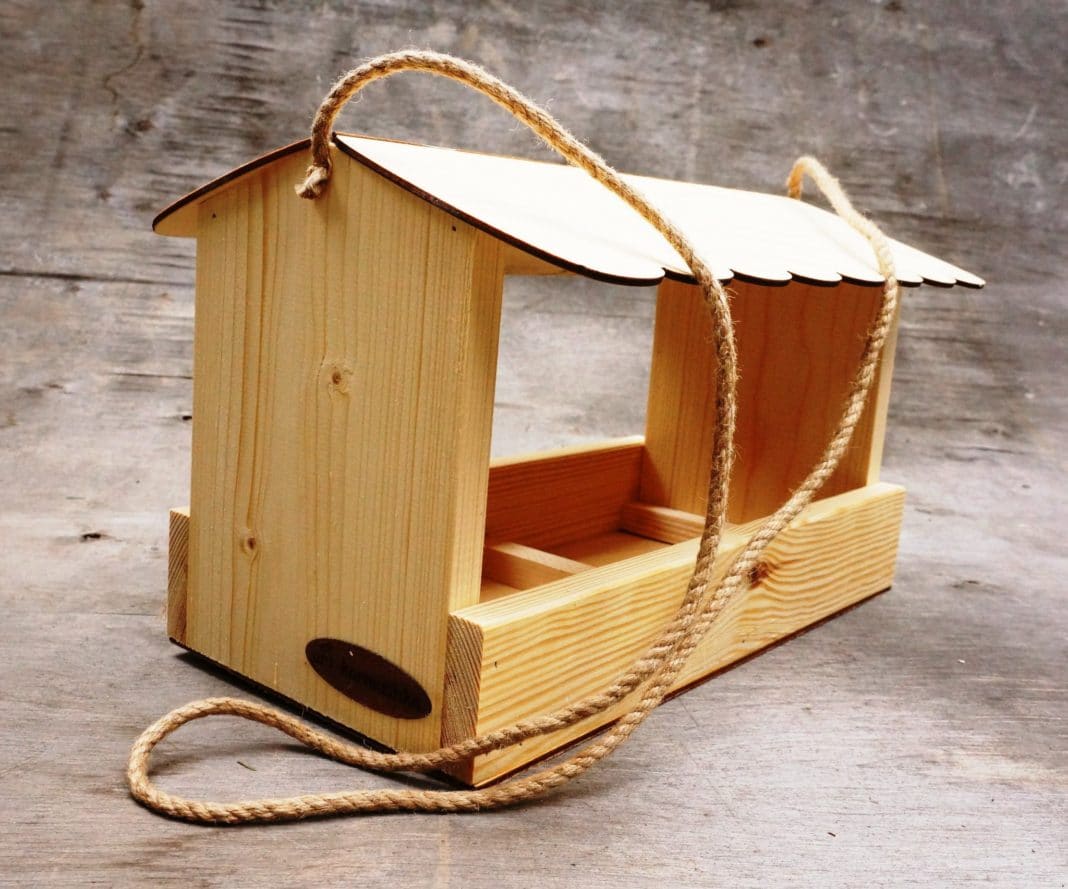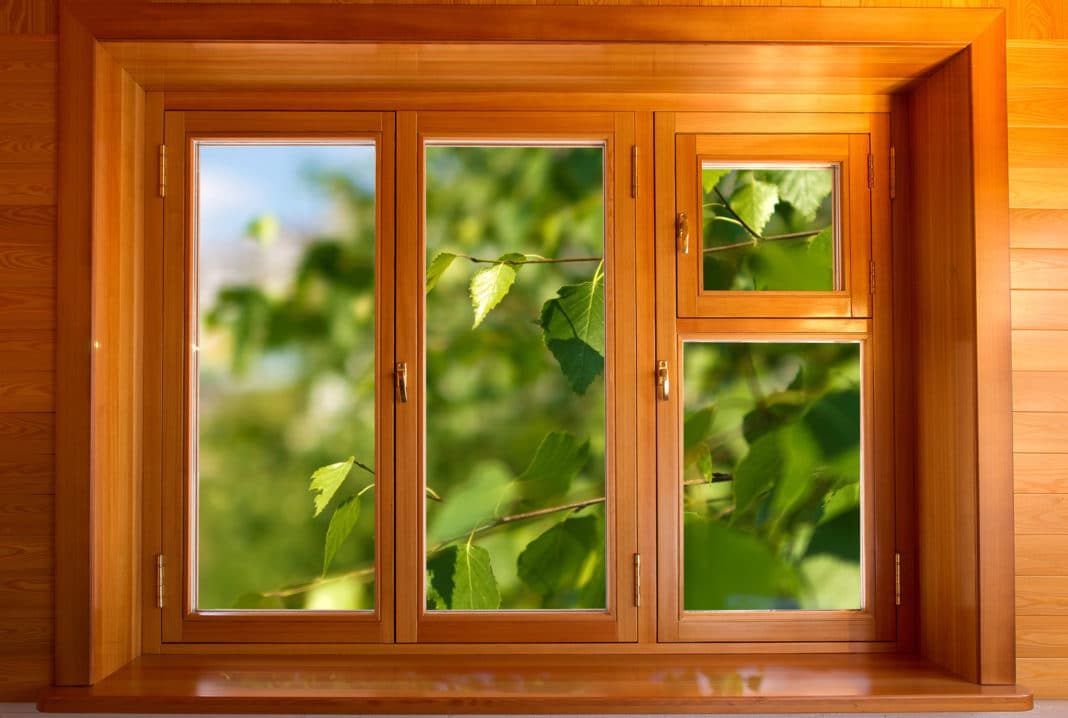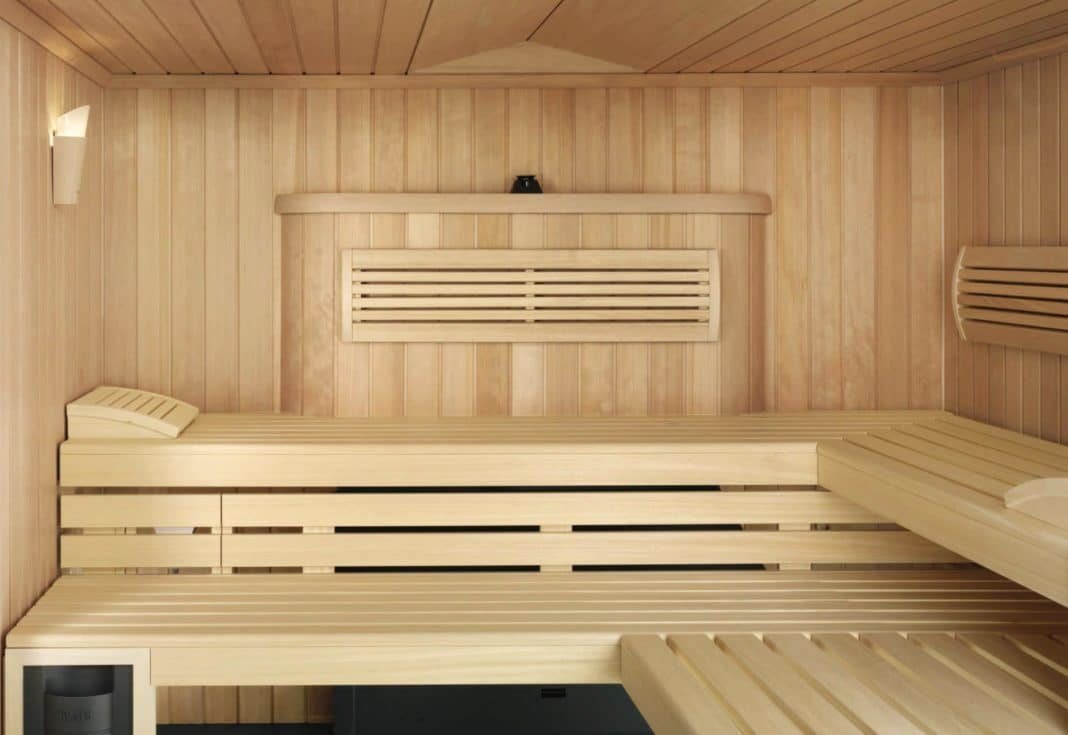A tabletop is the upper part of a table, being its main component, which determines the possibility of using this type of furniture.
When manufacturing a tabletop, various types of natural and artificial materials can be used, such as wood, stone, various types of plastics and plastics. When using wood and materials made from wood waste (chipboard, plywood, OSB), which are the simplest in terms of processing, the tabletop can be made by hand at home.
Advantages of Wooden Tops

Wooden Tabletop
The undoubted advantage of using wood is that it is an environmentally friendly material, which also has a number of indisputable advantages, such as:
- Ease of processing, allowing you to make a wooden tabletop of various geometric shapes and sizes.
- A variety of wood species used in manufacturing allows you to combine such products with various types of other finishing materials: glass, tile, metal, etc.
- The beauty and warmth of natural material allow it to be used in the construction of tables of various directions (kitchen, dining, work, etc.).
- Simplicity in maintenance and care, and with proper care – long service life.
- The possibility of local, local repair and reconstruction.
- Lower cost compared to analogs made of natural stone.
Having said the advantages, one cannot forget about the disadvantages, which include:
- Low resistance to external influences, such as high temperature, humidity, mechanical damage (cuts, scratches).
- Care requires special means that do not damage the outer surface.
- In case of damage – special processing and repair are required (sanding, coating with varnish, wax, etc.).
Choosing Wood
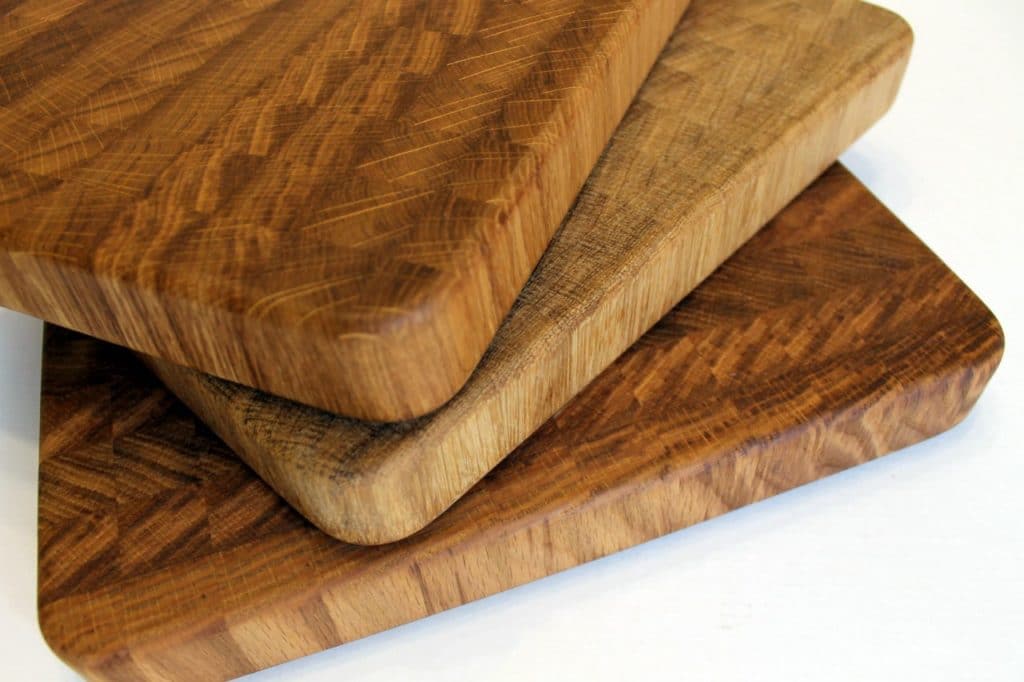
Oak Boards
When choosing a material, the purpose of the table on which the tabletop is mounted and its location are important.
Selection criteria are:
- Durability.
This indicator determines the ability of the material to withstand mechanical and thermal loads, as well as to prevent the effects of moisture.
- Hygiene.
Characterized by the ability to be processed with cleaning agents and other sanitary and hygienic products.
- Practicality.
Characterized by the durability and hygiene of the material, as well as its ability to be restored and repaired.
For the manufacture of the tabletop, a board with a thickness of not less than 25.0 mm and a high degree of drying can be used. Its humidity should be no more than 12.0%.
The raw material for the production of boards can be oak, cherry, walnut, teak, iroko, Siberian larch, linden, birch, fir or pine.
In addition, for the manufacture, a solid wood, straight plank or furniture shield can be used, which are made from the above-mentioned wood species.
Straight plank – a wooden board with chamfered sharp edges. Planks can be straight, beveled, and straight with grooves.
Furniture shield – a natural material made from wooden bars, glued together.
Table Size
The size of the table and tabletop, in particular, depends on its purpose and type of use.
It should be convenient to sit or stand at the table, as well as use cabinets and other furniture hung (installed) above the table surface.
When determining the dimensions of the tabletop used in the kitchen, the optimal ones are considered:
- height – 850 – 900 mm;
- depth – 600 – 800 mm;
- length – depending on the size of the table.
The height of the installation and the depth of the tabletop should correspond to the height of the user, which is easily varied when self-assembling furniture of various purposes.
Materials and Tools

Plane
For the manufacture of the tabletop, hardwood species are used, especially for products used in the kitchen and in rooms with high humidity (bathroom, laundry, etc.).
As already mentioned above, this can be oak, cherry, walnut, teak, iroko, Siberian larch, less often – linden, birch, fir or pine.
For self-manufacturing of this furniture element, the following tools are required:
- hand or electric plane (jointer);
- wood saw or electric jigsaw;
- drill or screwdriver;
- wood milling cutters;
- jointer;
- angle grinder (“grinder”) with a set of grinding wheels;
- files, sandpaper;
- tape measure, square;
- pencil, chalk, chalk.
For the assembly and finishing of the tabletop, the following are required:
- stain of the required color shade;
- antiseptic substances and materials;
- varnish or paint;
- carpenter’s glue.
How to Make a Wooden Tabletop Yourself
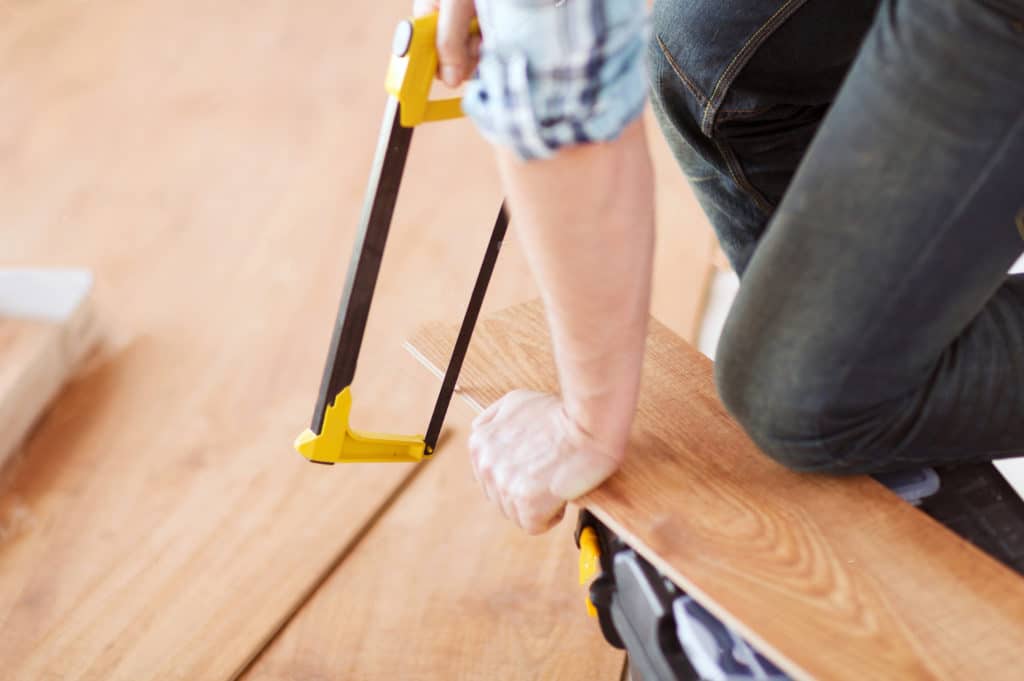
Cutting Boards
The manufacturing technology depends on the material used in the work, this is: board, straight plank, solid wood or furniture shield.
Manufacturing from Board and Straight Plank
When using a board and a straight plank, the manufacture of the tabletop is carried out in the following sequence:
- the board (plank) is cut to the required length and in the required quantity;
- the outer surface of the boards is processed with a plane and a jointer;
- grooves are cut in the side ends of the boards, for this an electric jigsaw or a special machine is used;
- slats are cut from the material, similar to that used for the manufacture of the tabletop. The thickness of the slat should correspond to the width of the cut groove.
- the manufactured slats are inserted into the groove from one of the sides of the prepared boards. At the moment of installing the slat in the groove, carpenter’s glue is laid there.
- when the slats are inserted, the boards are connected to each other, so that the slat enters the free groove of the adjacent board. At the same time, carpenter’s glue is also used.
- after all the boards are connected to each other, they are compressed by installing clamps or other devices that provide compression of the assembled canvas.
- when the glue dries, sanding and coloring of the outer surface are performed.
- antiseptic treatment of the assembled structure is carried out.
Manufacturing from Furniture Shield
When manufacturing a tabletop from a furniture shield, the work is carried out as follows:
- the furniture shield is cut according to the dimensions required for the constructed table.
- from the inner side of the furniture shield, its reinforcement is carried out, for which a wooden bar, slat is used. Mounting these elements ensures the strength of the structure under vertical loads (strength against deflection).
- if necessary, installing legs – mounting elements and their installation, when installing the tabletop on the table frame – installing the necessary fasteners (spikes, corners, etc.).
- sanding and polishing of the outer surface are carried out.
- processing with water-repellent substances and painting, if necessary, is carried out.
With Plastic Coating
Regardless of the technology and material from which the tabletop is made, it can be covered with plastic, which will improve the operational characteristics of this furniture element.
Plastic is used in case the working surface is damaged during the operation of the table or initially, during its manufacture.
On the market of such goods, there is a large number of various types of plastic, differing in technical characteristics (density, thickness), geometric dimensions and color solutions.
For the decoration of the tabletop, plastic is cut according to the sizes required for this, after which it is glued to the outer surface. The edges of the tabletop can also be faced with plastic.
For gluing, special glues, adhesive mastics or liquid nails are used.
Cladding of the Assembled Tabletop
When using boards in the manufacture of the canvas, in order to hide their ends, a cladding is made, which is a protective edging made of bars around the perimeter of the tabletop.
The attachment of the cladding to the tabletop canvas is carried out according to the “edge-groove” technology.
The finishing of the cladding (sanding, polishing, painting) is carried out simultaneously with the performance of these works on the tabletop canvas.
When using a furniture shield, the finishing of the edge is carried out in the same way.
In order for the tabletop, made by hand, to serve for a long time and please its user, it is necessary to carry out proper care for it, monitor its cleanliness, not allow excessive mechanical loads and the effects of high temperatures.
